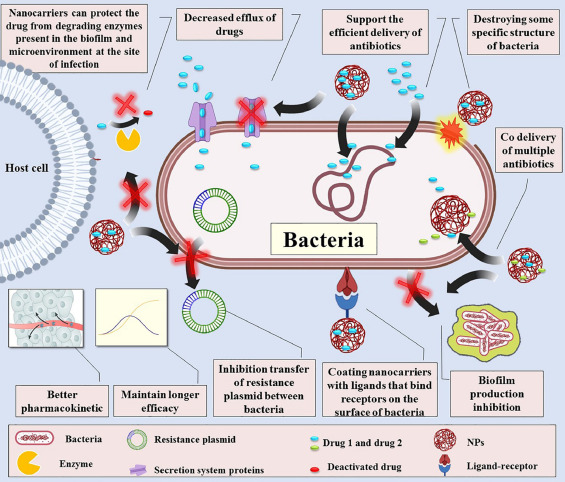
# The Unseen Price of Antibiotic Resistance: A Magnesium Dilemma
Antibiotic resistance remains a growing concern for global health, yet researchers have made an unexpected revelation: drug-resistant bacteria may not hold the complete advantage. A recent study suggests that these resilient microorganisms are incurring a hidden metabolic cost due to their resistance—particularly in their ability to regulate magnesium levels. This insight could lead to innovative approaches in combating the antibiotic resistance epidemic.
The pioneering research was recently published by Professor Gürol Süel and his team at the University of California San Diego. Their findings indicate an internal struggle for resources that may be leveraged to hinder resistant bacteria without the reliance on conventional antibiotics.
—
### The Magnesium Enigma
The UC San Diego team began with a seemingly straightforward query: **If antibiotic-resistant bacteria have such a pronounced edge over standard treatments, why haven’t they overtaken all bacterial communities?** The answer, it appears, rests on these bacteria’s internal challenges in managing vital resources—most importantly, magnesium.
“We identified a vulnerability in antibiotic-resistant bacteria,” stated Süel, a professor in the university’s Department of Molecular Biology. “We can exploit this hidden cost to mitigate antibiotic resistance without resorting to any drugs or harmful substances.”
Resistant bacteria appear to endure a metabolic strain. Their secret advantage against antibiotics—altered ribosomes essential for protein synthesis—also necessitates a higher magnesium intake than that required by non-resistant strains. This leads to what the researchers have termed a **”molecular tug-of-war.”**
—
### A Molecular Tug-of-War
Ribosomes function as the protein manufacturing sites of cells, crucial to all biological functions. However, the modifications that confer antibiotic resistance to ribosomes come with a distinct drawback: they demand significantly more magnesium ions to operate effectively. Magnesium is vital in stabilizing ribosomal structures and supporting protein synthesis.
Professor Süel and his team found that this heightened demand for magnesium generates internal rivalry among resistant bacteria—particularly between ribosomes and ATP (adenosine triphosphate), the cell’s principal energy currency, which also relies on magnesium for energy regulation. This **competition for magnesium** results in a slowdown of growth in resistant bacteria compared to their non-resistant counterparts, as it restricts their operational efficiency.
The researchers analyzed *Bacillus subtilis*, a bacterial species frequently utilized in laboratory studies, in collaboration with experts from Arizona State University and the Universitat Pompeu Fabra in Spain. Through atomic-scale modeling, they uncovered how mutant ribosomes responsible for antibiotic resistance engage in an internal struggle for scarce magnesium ions, thereby disrupting the bacteria’s standard metabolic functions and growth.
—
### Practical Implications: New Horizons in Infectious Disease Management
This discovery presents a promising avenue for addressing drug-resistant infections. Rather than attempting to eliminate bacteria with more potent antibiotics—which can further increase resistance—scientists might now have a way to “deprive” resistant strains by focusing on their dependency for magnesium. Notably, such approaches could selectively affect harmful bacteria while preserving the beneficial, symbiotic microbes in both the human body and the environment.
“We are running low on effective antibiotics, and their widespread use over the years has resulted in their presence all over the world, from the Arctic to the oceans, even infiltrating our groundwater,” remarks Professor Süel. “There is a pressing need for drug-free alternatives in treating bacterial infections.”
This finding could point the way to *drug-independent* bacterial therapies, providing a critical tool in a world increasingly resistant to current antibiotics. By altering magnesium availability, scientists may weaken resistant bacteria’s survival capabilities without damaging other organisms or triggering evolutionary pressures that encourage further resistance.
—
### Key Insights and New Approaches
The ramifications of this research are extensive, especially as we approach an era post-antibiotics. This limitation regarding magnesium offers various prospective treatment strategies. For example, therapies aimed at disrupting bacteria’s magnesium regulation could be formulated, while minimizing adverse effects on the host.
While further investigation is necessary, the relationship between ribosomal modifications for antibiotic resistance and magnesium utilization has uncovered a promising potential method to confront infections that traditional antibiotics can no longer manage.
—
### Key Terms:
– **Ribosome**: The cell’s machinery for synthesizing proteins, essential for growth and cellular function.
– **ATP (Adenosine triphosphate)**: The chief molecule used to store and transfer energy in living organisms.
– **Magnesium ions**: Vital minerals needed for stabilizing certain cell structures and facilitating processes like protein production.
– **Bacillus subtilis**: A commonly examined bacterial species often used as a model organism in biological investigations.
—
### Test Your Knowledge:
1. What is the key disadvantage discovered in antibiotic-resistant bacteria?
They require more magnesium for their ribosomes to function properly, creating an internal resource shortage.